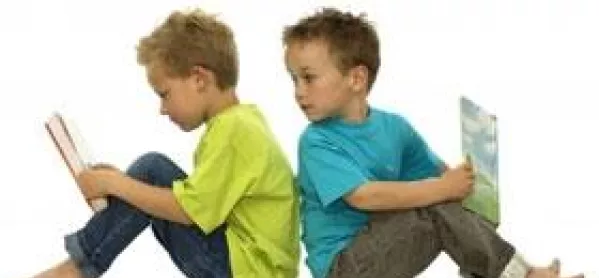Costumes, masks, puppets, music and sound effects all play their part in English and literacy lessons at Montacute School in Poole, a specialist beacon school catering for two to 18-year-old pupils with severe, complex or profound learning difficulties.
“We use anything and everything to encourage interaction,” says Sue Jones, the head of English. “If we just read a story, we won’t get the pupils’ attention.”
Speech and language therapists are closely involved and literacy lessons focus on specific individual targets, such as improving eye contact or asking a question.
Objects featured in the story may be passed around the class for pupils to touch; things that light up, spin or can be squeezed are favourites. If the story is set by the sea, wave sounds may be played in the background. Characters can be brought to life through puppets and colourful masks.
Pupils can also register their reactions to books on an interactive whiteboard and use it to answer questions about the plot. For example, does Elmer the elephant want to be a lion or a monkey?
To study Romeo and Juliet, key stage 3 pupils dressed in costume and handled props. They videoed each other, watched each other’s performances and sequenced the story. Teachers had edited the play, but some of the original language was included and the more able pupils read a few of the lines.
Pupils enjoy all kinds of reading, especially books that make sounds when the pages are pressed. They can also choose from boxes of books, comics or newspapers in the library and from readers in the classrooms.
Sue is impressed with a new series of readers called Storytracks, which use picture symbols alongside the words. The illustrations are particularly appropriate for pupils on the autistic spectrum, as they show whole objects, which are easier for them to recognise.
The school also takes a sensory approach to writing. To develop early writing skills, pupils experiment with shaving foam, chalk, paint and crayon, before moving on to Writing with Symbols, a computer program where words appear next to the picture symbols selected by the pupils.
With this system, pupils can write their news, sequence stories and notices to be used around the school. Older pupils learn to write their names and addresses and fill in application forms for work experience using PECS (Picture Exchange and Communication System) or voice output aids.
With the help of these aids they attend interviews for jobs helping the school caretaker, the technology technician or in the office.
But literacy at Montacute is far more than reading, writing, speaking and listening, according to Sue. Improved communication also reduces anxiety and increases flexibility. All pupils have pictorial timetables composed of symbols and photos of their teachers so that they know exactly what to expect and can cope with any changes to their daily routine.
“We try to give pupils the functional communication skills that they will need in adult life,” Sue says.
Learning to use picture symbols means that pupils can express choices and wants, for instance, and will feel less frustrated.
WHERE TO LOOK NEXT
- Writing with Symbols is produced by Widgit - www.widgit.com.
- Storytracks is published by Just Special - www.just-special- marketing.co.uk.


